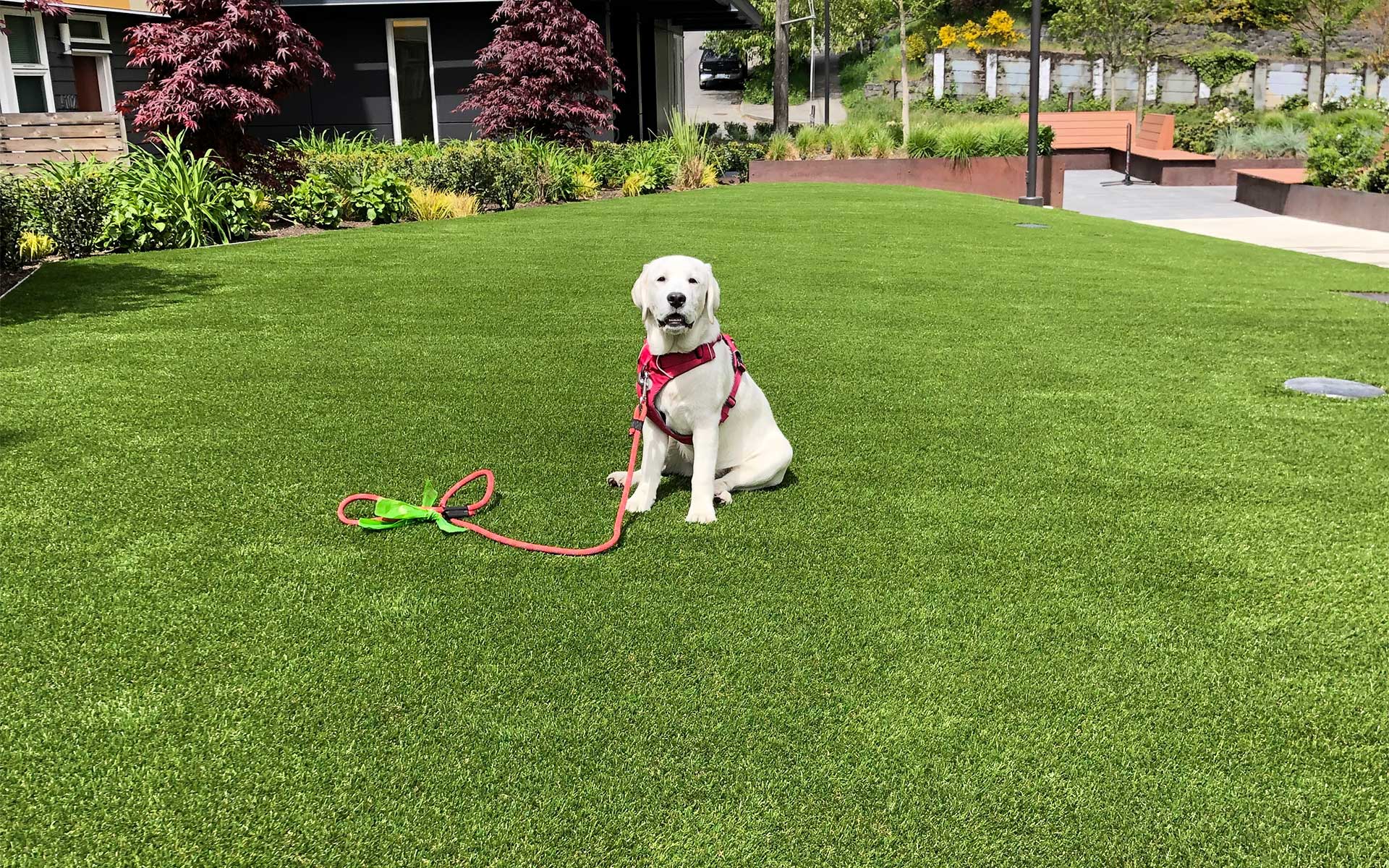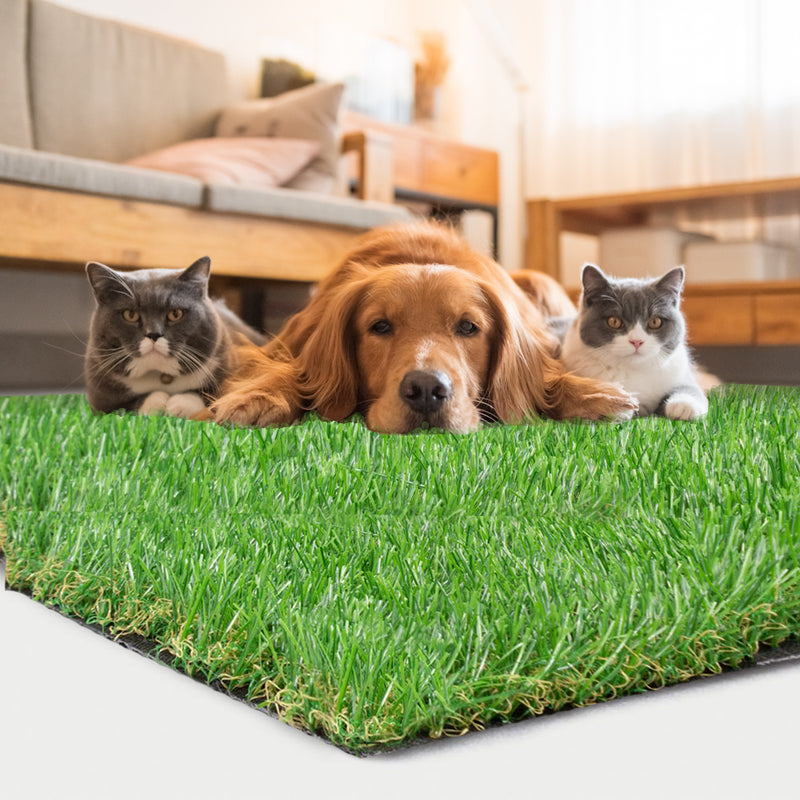See Why Homeowners Prefer Artificial Grass for Lasting Landscaping Practices
As homeowners significantly focus on sustainability in landscaping, artificial lawn has actually arised as a compelling choice to conventional grass. What continues to be to be explored is the full extent of benefits that man-made lawn can provide to home owners and the environment alike.
Water Conservation Perks
One of the most considerable benefits of synthetic lawn is its duty in water preservation. In comparison, artificial turf eliminates this demand entirely, as it does not call for watering.
Moreover, the installment of synthetic grass can add to an extra lasting landscape. Homeowners can considerably lower their water bills, permitting reallocation of sources to various other ecological efforts or home uses. Furthermore, synthetic turf is designed to withstand numerous weather conditions without the need for supplemental watering, making it a perfect choice for areas dealing with water scarcity.
The ecological advantages extend past instant water financial savings. By decreasing water usage, artificial lawn assists to reduce the influences of environment modification, protecting important communities that are intimidated by extreme water extraction. As lasting landscaping techniques acquire traction, synthetic grass emerges as a liable choice for home owners seeking to develop eco-friendly exterior spaces.
Lowered Maintenance Initiatives
Artificial grass significantly minimizes maintenance initiatives contrasted to conventional yard lawns. With man-made grass, house owners can remove the taxing tasks related to natural landscaping, such as mowing, feeding, and weeding. This not just saves useful time yet also minimizes physical labor, making lawn care easily accessible for people of all ages.
One of one of the most notable advantages is the lack of normal mowing. Conventional yards call for frequent trimming to preserve a cosmetically pleasing elevation, whereas synthetic grass stays continually lush without the requirement for reducing. In addition, home owners no much longer need to apply plant foods or chemicals, which are usually required to keep natural lawn healthy and balanced. This change not just lightens the work yet additionally advertises a neater, extra consistent look year-round.
Furthermore, synthetic grass is resilient and sturdy, needing very little upkeep past occasional cleaning and washing to eliminate debris. This convenience of upkeep allows homeowners to appreciate their exterior areas without the constant fear of maintenance, offering more time for recreation and household tasks. Eventually, the decreased maintenance initiatives related to synthetic grass make it an attractive option for those looking for a low-maintenance, visually appealing landscape.

Environmental Impact Reduction
There is a growing acknowledgment of the environmental advantages connected with synthetic grass, especially in terms of water preservation and minimized chemical usage. Typical lawns need considerable amounts of water, specifically in drought-prone regions, leading to increased stress on local water sources. On the other hand, synthetic grass removes the need for watering, drastically minimizing water intake and advertising sustainability.
Furthermore, traditional yard maintenance commonly entails the application of chemicals, herbicides, and fertilizers, which can add to soil and water air pollution. Synthetic grass minimizes this environmental risk by Click Here requiring marginal upkeep and basically getting rid of the requirement for unsafe chemicals. This not just improves dirt health but likewise safeguards regional ecological communities from harmful overflow.
Additionally, the production of natural lawn yards commonly includes the use of fossil gas for cutting and landscaping tools, additional adding to greenhouse gas discharges. By choosing artificial lawn, house owners can considerably decrease their carbon footprint linked with yard treatment activities.
Visual Charm and Versatility
Along with its ecological benefits, synthetic grass supplies significant aesthetic charm and versatility for landscaping. House owners can attain a lush, eco-friendly look year-round, removing the seasonal variations typically connected these details with all-natural turf. This regular visual not only enhances the visual charm of a building but also contributes to a properly maintained and sleek appearance.
Moreover, synthetic grass is offered in a range of styles, colors, and appearances, enabling modification to fit private preferences website link and design themes - Phoenix turf companies. Whether utilized in domestic gardens, commercial spaces, or entertainment locations, it can effortlessly integrate into varied landscape design styles, from modern minimal to lush exotic setups
The adaptability of man-made turf prolongs beyond plain appearance; it can be installed in different locations, including rooftops, patio areas, and also interior spaces, creating chances for special landscape design solutions. Additionally, it is suitable for a range of activities, from kids's backyard to pet-friendly atmospheres, giving capability without endangering style.
Eventually, the visual allure and flexibility of synthetic lawn make it an eye-catching option for home owners seeking lasting landscape design options that do not compromise appeal for ecological responsibility.

Long-Term Cost Cost Savings
One of the most compelling advantages of fabricated lawn is its potential for long-term price financial savings. Unlike all-natural yard, which calls for normal upkeep-- consisting of mowing, watering, feeding, and pest control-- artificial turf significantly reduces these ongoing expenditures. Home owners can conserve a considerable amount on water bills, especially in areas where water shortage is a pushing concern. The removal of grass care solutions better adds to economic savings, as there is no requirement for specific equipment or labor.
In addition, synthetic grass has a life expectancy of 15 to 25 years, depending on its quality and usage. This toughness lessens substitute prices, making it an extra cost-effective option in the long run. The first investment in synthetic lawn can commonly be recovered through the cost savings built up over time.
While the upfront price may seem greater contrasted to sod setup, the collective cost savings from reduced maintenance and water use frequently surpass these first expenditures. Inevitably, the adoption of synthetic grass not just promotes a lasting landscape design option however additionally uses house owners a financially smart option that aligns with long-lasting budgeting objectives.
Verdict
Fabricated lawn emerges as a compelling option for sustainable landscaping, supplying considerable advantages in water conservation, minimized maintenance initiatives, and reduced environmental effect. As communities increasingly focus on ecologically friendly techniques, the fostering of synthetic lawn stands for a progressive action toward achieving sustainable and resistant landscapes.
In addition, man-made turf is made to endure various weather conditions without the demand for additional watering, making it an ideal selection for regions dealing with water deficiency. (Arizona turf)

Artificial turf arises as a compelling alternative for lasting landscaping, using considerable benefits in water conservation, lowered upkeep initiatives, and reduced ecological effect.